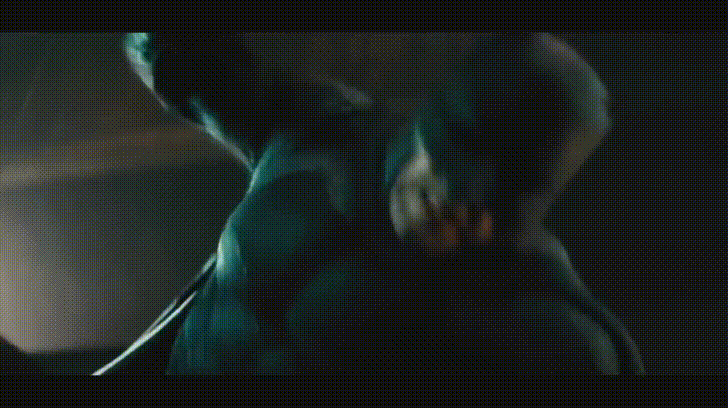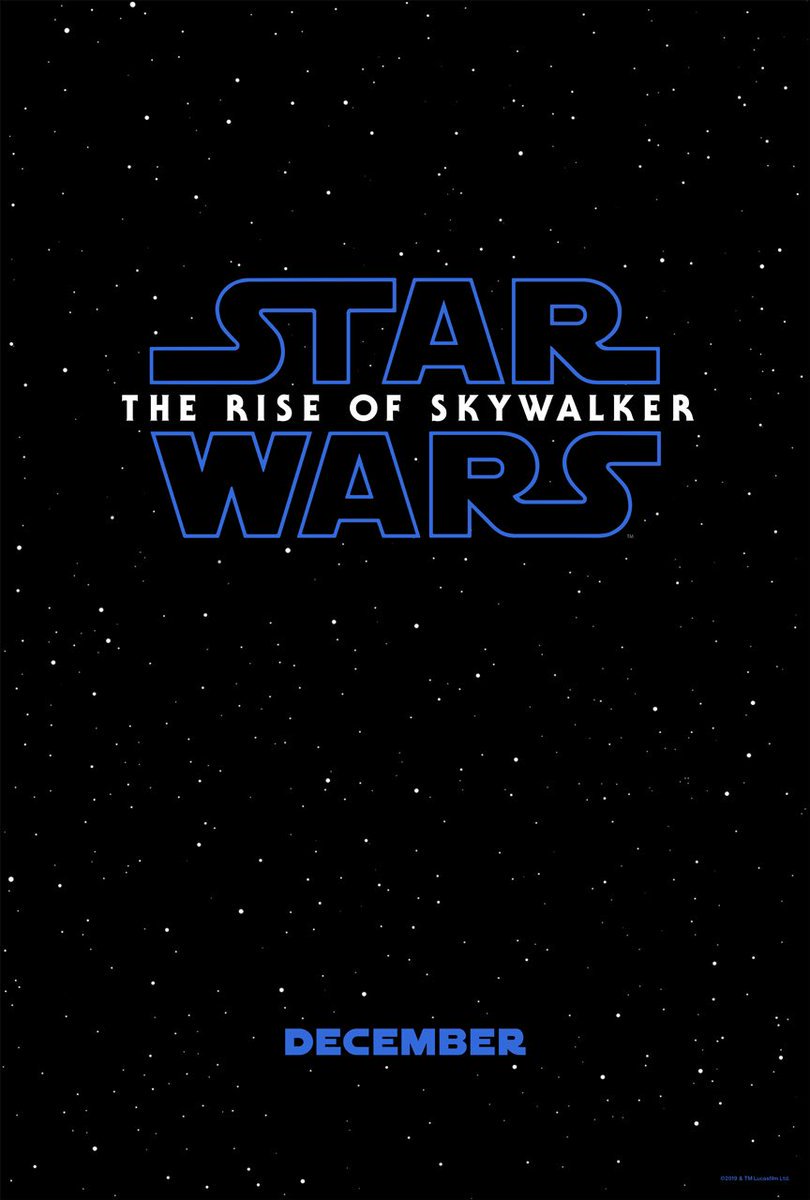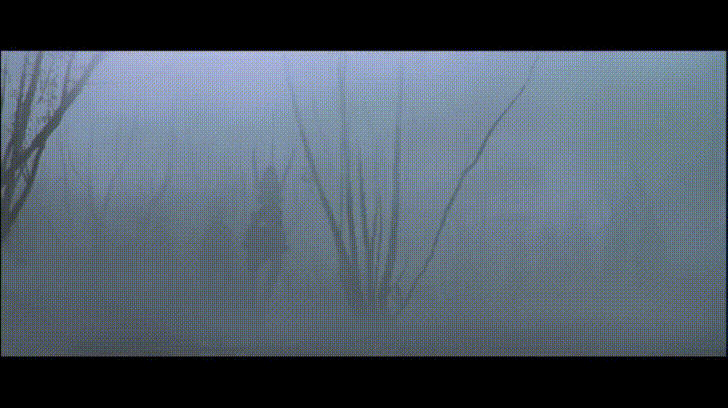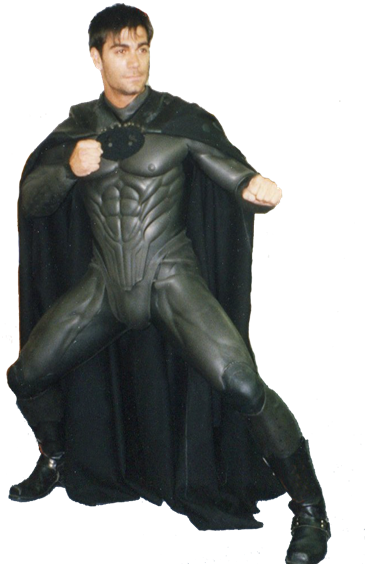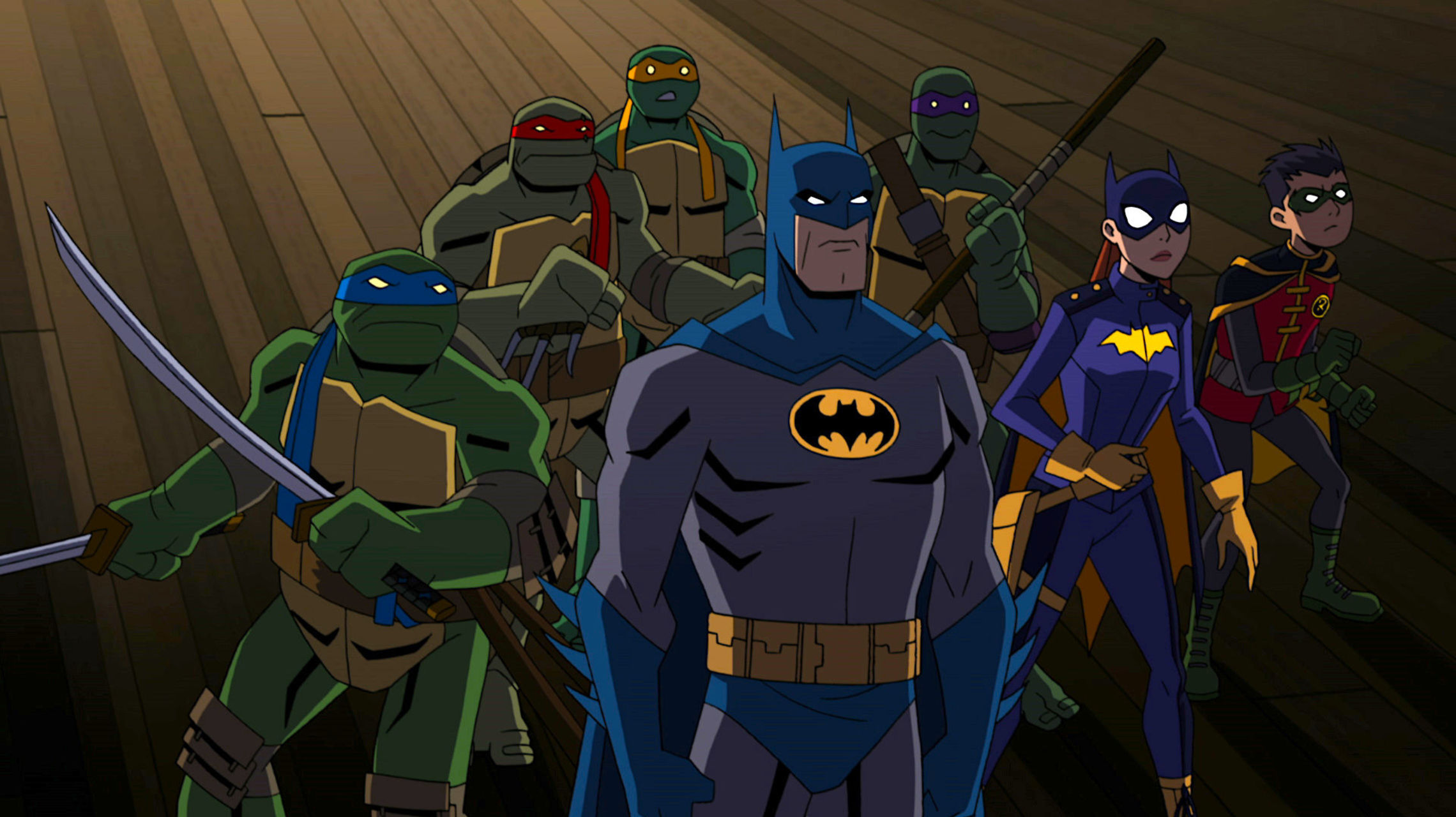Back in 2017 we had a comic-to-screen analysis of Sam Raimi's first Spider-Man (2002) movie to coincide with the film's 15th anniversary, as well as the release of Spider-Man: Homecoming: https://www.batman-online.com/forum/index.php?topic=3590.0
Summer 2019 marks the release of Spider-Man: Far From Home and also happens to be the 15th anniversary of Raimi's Spider-Man 2 (2004), so now seems like as good a time as any to go back and take a look at that movie and the comics that might have influenced it.
As with the previous Raimi Spider-Man film, much of the inspiration came from the original Silver Age stories of the sixties and the Ultimate Spider-Man line that was popular at the time of the movie's production. Raimi specifically cited 'Unmasked by Doctor Octopus!' (Amazing Spider-Man Vol 1 #12, May 1964) and the 'Spider-Man No More!' storyline from Amazing Spider-Man Vol 1 #50 (July 1967) as major influences:
My Spider-Man 2 DVD set includes a reprint of 'Spider-Man No More!' This tie-in comic also contains cover art for several other stories that might have influenced the movie. I'll highlight some of these issues later in this analysis.
The movie's portrayal of Doctor Octopus is also indebted to the character's debut storyline in Ultimate Spider-Man Vol 1 #14-21 (December 2001-June 2002).
Many viewers have pointed out similarities between Spider-Man 2 and the Richard Donner/Richard Lester movie Superman II (1980), but Raimi himself – while acknowledging his love of that film – has downplayed its influence:
The film begins with one of the best opening title sequences of any superhero movie. Comic artist Alex Ross provided the paintings that recap the events of the previous film, similar to how the opening titles of Richard Lester's Superman II recapped the events of Superman: The Movie (1978).
The first time we see Peter Parker he is riding a moped similar to the scooter he rode in the Silver Age comics. The following panel is from 'The Tentacles and the Trap!' (Amazing Spider-Man Vol 1 #54, November 1967).

Early in the film Peter tries selling some pictures to J. Jonah Jameson, only for the editor to dismiss all of his photographs that aren't directly related to Spider-Man. Jameson has shown similar contempt towards Peter's work in the comics, as seen in this panel from 'Man on a Rampage!' (Amazing Spider-Man Vol 1 #32, January 1966).

Peter is fired by Jameson, then immediately rehired when the editor discovers he has fresh photos of Spider-Man. This exchange was likely inspired by a similar scene from 'In the Clutches of the Kingpin!' (Amazing Spider-Man Vol 1 #51, August 1967), which was the issue that followed immediately after 'Spider-Man No More!'

One of Peter's teachers at university is Doctor Curt Connors, played by Dylan Baker. Connors was mentioned in the previous movie, but this marks the first time he appears on screen. He debuted in the comics in 'Face-to-Face with... the Lizard!' (Amazing Spider-Man Vol 1 #6, November 1963). As in the comics, the movie version is shown to have only one arm.

Peter's character arc in the film sees him struggling to balance the different aspects of his life. His crime fighting activities are thriving at the expense of his social, work and academic responsibilities. This reflects the storyline of 'Spider-Man No More!'
Connors informs Peter that his grades are suffering as a result of his tardiness. His teacher told him the same thing in 'Spider-Man No More!'

Peter's social life is also in trouble. Harry Osborn believes Spider-Man murdered his father, and this creates a widening rift between him and Peter, just as it did in the comics. The following scene is from 'The Dark Wings of Death!' (Amazing Spider-Man Vol 1 #127, December 1973).

Peter also learns that Aunt May is struggling financially in the wake of Uncle Ben's death, and this too happened in the comics. The following panel is from 'Spider-Man' (Amazing Spider-Man Vol 1 #1, March 1963).

To make matters worse, Peter discovers he is losing his powers. This has happened to him numerous times over the years. The earliest example was in the 'Unmasked by Doctor Octopus!' story that Raimi cited as an influence on the film. In that issue, Peter was suffering from an illness that sapped him of his strength and made it harder for him to cling to walls. The untimely onset of these symptoms coincided with the return of Doc Ock, just as his loss of power does in the movie. More on this story later.
Peter's landlord, Mr. Ditkovitch, was named in honour of Spider-Man's co-creator Steve Ditko.
The main villain in the movie is Otto Octavius, aka Doctor Octopus, who debuted in the comics back in 'Spider-Man Versus Doctor Octopus' (Amazing Spider-Man Vol 1 #3, July 1963). English actor Alfred Molina plays him in the film. His costume in the movie, consisting of sunglasses and a brown trench coat, reflects one of the outfits he wore in the Ultimate Spider-Man series.

In the original Earth-616 timeline Peter didn't first encounter Octavius until after the latter had already become Doctor Octopus. However in the Ultimate Spider-Man timeline they had already met prior to Otto becoming a villain, which is also what happens in the movie. In both stories Peter is introduced to Otto by Harry Osborn. The following panel is from 'Growing Pains' (Ultimate Spider-Man Vol 1 #2, December 2000)

In Marvel Year by Year: A Visual Chronicle, Marvel editor Tom DeFalco wrote:
The movie versions of Peter and Otto strike up a rapport that reflects Lee and Ditko's original concept for the character of Doc Ock. At the end of the film, it is their ability to relate to one another that allows Peter to reason with Octavius by appealing to his sense of intellectual responsibility.
The cinematic version of Otto has a wife named Rosie, played by Donna Murphy, whose tragic death is a major factor in his turn towards criminality. Rosie was created for the film, though she is somewhat similar to another character named Mary Alice Anders who first appeared in 'An Obituary for an Octopus' (Spider-Man Unlimited Vol 1 #3, November 1993). Mary was a scientist who became romantically involved with Otto before he became Doc Ock. Otto's mother sabotaged the relationship, which left her son deeply embittered and helped set him on the path to villainy.

The extended cut of the movie features a scene where Peter sketches an image of his own face with half of it covered by the Spider-Man mask. This image has been used countless times in the comics, often to indicate Peter's spidey sense, as seen in this example from 'The Uncanny Threat of the Terrible Tinkerer!' (Amazing Spider-Man Vol 1 #2, May 1963).

The scene where Mary Jane refuses to pick up the phone when Peter calls, and he imagines telling her that he's Spider-Man, is similar to a scene from 'The Sinister Secret of Spider-Man's New Costume!' (Amazing Spider-Man Vol 1 #258, November 1984). This issue was part of the 'Alien Costume Saga', which Raimi went on to adapt in Spider-Man 3.

In the movie Octavius creates his mechanical arms to aid in his experiments, just like he did in the comics.

This isn't a comic reference, but one of the Oscorp executives at Octavius's demonstration is played by Peter McRobbie, who would later portray Father Paul Lantom in the Daredevil TV show on Netflix.

Something goes wrong during one of Otto's experiments and he is badly wounded.

In the movie the accident occurrs during an experiment funded by Oscorp, which reflects Doc Ock's origin story in the Ultimate Spider-Man canon. Only in the Ultimate Spider-Man comics he was fused to his arms during the same lab explosion that turned Norman Osborn into the Green Goblin, while in the film the accident occurs during an unrelated experiment. But Oscorp is involved in the accident in both versions of the story.
The scene where Otto awakens in hospital and massacres the surrounding medical staff is taken from 'Doctor Octopus' (Ultimate Spider-Man Vol 1 #14, December 2001). In both stories he wakes to find himself lying in a hospital bed with his eyes bandaged, initially unaware that he has been fused to his metal arms.

In the comic he had been in a coma for several months before awakening, while in the movie he wakes not long after being admitted. In both stories his metal arms slaughter the surrounding medical personnel with ruthless efficiency.

The image of Otto roaming the city barefoot and shirtless is evocative of the Ultimate Spider-Man comics.

After leaving the hospital he steps into a road and is almost hit by a car. Fortunately his new arms grant him the strength to lift the vehicle into the air. The following panel is from 'Live' (Ultimate Spider-Man Vol 1 #20, June 2002).

Octavius makes his way to the waterfront where he establishes his new hideout in a dilapidated warehouse. Doc Ock has had several similar hideouts in the comics, including the following example from 'Enter: Doctor Octopus' (Amazing Spider-Man Vol 1 #53, October 1967). The cover of this issue is included in the Spider-Man 2 DVD comic, making it likely it was a deliberate reference.


Following Octavius's escape, Hoffman and Jameson discuss what they should call him. Before settling on the name 'Doctor Octopus', Hoffman suggests 'Doctor Strange'. Obviously this is a nod to Marvel's Doctor Stephen Strange, who first appeared in 'Doctor Strange Master of Black Magic!' (Strange Tales Vol 1 #110, July 1963). Like Spider-Man, Doctor Strange was created by the team of Stan Lee and Steve Ditko.
Jameson then instructs Peter to cover a party being held at a planetarium. Peter asks if he can be paid in advance, but Jameson bluntly refuses. The same thing happened when Peter asked Jameson for an advance in 'Nothing Can Stop... the Sandman!' (Amazing Spider-Man Vol 1 #4, September 1963), which is a story Raimi referenced heavily in Spider-Man 3 (2007).

Summer 2019 marks the release of Spider-Man: Far From Home and also happens to be the 15th anniversary of Raimi's Spider-Man 2 (2004), so now seems like as good a time as any to go back and take a look at that movie and the comics that might have influenced it.
As with the previous Raimi Spider-Man film, much of the inspiration came from the original Silver Age stories of the sixties and the Ultimate Spider-Man line that was popular at the time of the movie's production. Raimi specifically cited 'Unmasked by Doctor Octopus!' (Amazing Spider-Man Vol 1 #12, May 1964) and the 'Spider-Man No More!' storyline from Amazing Spider-Man Vol 1 #50 (July 1967) as major influences:
Quote"I was thinking about a great issue of Stan Lee's Spider-Man comic book where he gets the flu. And he, for a time, is really weak. It was so human to me, I thought it was great. [...] I thought that was a unique thing that happened in Stan Lee's comics. But also there was another issue of Stan Lee's comics that I loved where he decided to throw the suit away. It was issue number 50, perhaps, his life problems had just become too great, so I think what happened was there was a synthesis of those two ideas, along with other elements I was interested in telling in this story. That's where the genesis of the loss of powers came from."https://www.superherohype.com/features/86019-interview-director-sam-raimi-on-spider-man-2
My Spider-Man 2 DVD set includes a reprint of 'Spider-Man No More!' This tie-in comic also contains cover art for several other stories that might have influenced the movie. I'll highlight some of these issues later in this analysis.
The movie's portrayal of Doctor Octopus is also indebted to the character's debut storyline in Ultimate Spider-Man Vol 1 #14-21 (December 2001-June 2002).
Many viewers have pointed out similarities between Spider-Man 2 and the Richard Donner/Richard Lester movie Superman II (1980), but Raimi himself – while acknowledging his love of that film – has downplayed its influence:
Quote"I would say, though, that I was influenced by the Stan Lee comic books. All the ideas came out of those Stan Lee comic books, and the artists that drew them, from Romita to Steve Ditko. That's where all the ideas for the Spider-Man films came from. As much as I love the Superman films, they weren't really the source material."https://www.cbr.com/guest-spot-rohan-williams-interviews-sam-raimi-and-rob-tapert-part-1/
The film begins with one of the best opening title sequences of any superhero movie. Comic artist Alex Ross provided the paintings that recap the events of the previous film, similar to how the opening titles of Richard Lester's Superman II recapped the events of Superman: The Movie (1978).
The first time we see Peter Parker he is riding a moped similar to the scooter he rode in the Silver Age comics. The following panel is from 'The Tentacles and the Trap!' (Amazing Spider-Man Vol 1 #54, November 1967).

Early in the film Peter tries selling some pictures to J. Jonah Jameson, only for the editor to dismiss all of his photographs that aren't directly related to Spider-Man. Jameson has shown similar contempt towards Peter's work in the comics, as seen in this panel from 'Man on a Rampage!' (Amazing Spider-Man Vol 1 #32, January 1966).

Peter is fired by Jameson, then immediately rehired when the editor discovers he has fresh photos of Spider-Man. This exchange was likely inspired by a similar scene from 'In the Clutches of the Kingpin!' (Amazing Spider-Man Vol 1 #51, August 1967), which was the issue that followed immediately after 'Spider-Man No More!'

One of Peter's teachers at university is Doctor Curt Connors, played by Dylan Baker. Connors was mentioned in the previous movie, but this marks the first time he appears on screen. He debuted in the comics in 'Face-to-Face with... the Lizard!' (Amazing Spider-Man Vol 1 #6, November 1963). As in the comics, the movie version is shown to have only one arm.

Peter's character arc in the film sees him struggling to balance the different aspects of his life. His crime fighting activities are thriving at the expense of his social, work and academic responsibilities. This reflects the storyline of 'Spider-Man No More!'
Connors informs Peter that his grades are suffering as a result of his tardiness. His teacher told him the same thing in 'Spider-Man No More!'

Peter's social life is also in trouble. Harry Osborn believes Spider-Man murdered his father, and this creates a widening rift between him and Peter, just as it did in the comics. The following scene is from 'The Dark Wings of Death!' (Amazing Spider-Man Vol 1 #127, December 1973).

Peter also learns that Aunt May is struggling financially in the wake of Uncle Ben's death, and this too happened in the comics. The following panel is from 'Spider-Man' (Amazing Spider-Man Vol 1 #1, March 1963).

To make matters worse, Peter discovers he is losing his powers. This has happened to him numerous times over the years. The earliest example was in the 'Unmasked by Doctor Octopus!' story that Raimi cited as an influence on the film. In that issue, Peter was suffering from an illness that sapped him of his strength and made it harder for him to cling to walls. The untimely onset of these symptoms coincided with the return of Doc Ock, just as his loss of power does in the movie. More on this story later.
Peter's landlord, Mr. Ditkovitch, was named in honour of Spider-Man's co-creator Steve Ditko.
The main villain in the movie is Otto Octavius, aka Doctor Octopus, who debuted in the comics back in 'Spider-Man Versus Doctor Octopus' (Amazing Spider-Man Vol 1 #3, July 1963). English actor Alfred Molina plays him in the film. His costume in the movie, consisting of sunglasses and a brown trench coat, reflects one of the outfits he wore in the Ultimate Spider-Man series.

In the original Earth-616 timeline Peter didn't first encounter Octavius until after the latter had already become Doctor Octopus. However in the Ultimate Spider-Man timeline they had already met prior to Otto becoming a villain, which is also what happens in the movie. In both stories Peter is introduced to Otto by Harry Osborn. The following panel is from 'Growing Pains' (Ultimate Spider-Man Vol 1 #2, December 2000)

In Marvel Year by Year: A Visual Chronicle, Marvel editor Tom DeFalco wrote:
Quote"Dr. Octopus shared many traits with Peter Parker. They were both shy, both interested in science, and both had trouble relating to women... Otto Octavius even looked like a grown up Peter Parker. Lee and Ditko intended Otto to be the man Peter might have become if he hadn't been raised with a sense of responsibility."
The movie versions of Peter and Otto strike up a rapport that reflects Lee and Ditko's original concept for the character of Doc Ock. At the end of the film, it is their ability to relate to one another that allows Peter to reason with Octavius by appealing to his sense of intellectual responsibility.
The cinematic version of Otto has a wife named Rosie, played by Donna Murphy, whose tragic death is a major factor in his turn towards criminality. Rosie was created for the film, though she is somewhat similar to another character named Mary Alice Anders who first appeared in 'An Obituary for an Octopus' (Spider-Man Unlimited Vol 1 #3, November 1993). Mary was a scientist who became romantically involved with Otto before he became Doc Ock. Otto's mother sabotaged the relationship, which left her son deeply embittered and helped set him on the path to villainy.

The extended cut of the movie features a scene where Peter sketches an image of his own face with half of it covered by the Spider-Man mask. This image has been used countless times in the comics, often to indicate Peter's spidey sense, as seen in this example from 'The Uncanny Threat of the Terrible Tinkerer!' (Amazing Spider-Man Vol 1 #2, May 1963).

The scene where Mary Jane refuses to pick up the phone when Peter calls, and he imagines telling her that he's Spider-Man, is similar to a scene from 'The Sinister Secret of Spider-Man's New Costume!' (Amazing Spider-Man Vol 1 #258, November 1984). This issue was part of the 'Alien Costume Saga', which Raimi went on to adapt in Spider-Man 3.

In the movie Octavius creates his mechanical arms to aid in his experiments, just like he did in the comics.

This isn't a comic reference, but one of the Oscorp executives at Octavius's demonstration is played by Peter McRobbie, who would later portray Father Paul Lantom in the Daredevil TV show on Netflix.

Something goes wrong during one of Otto's experiments and he is badly wounded.

In the movie the accident occurrs during an experiment funded by Oscorp, which reflects Doc Ock's origin story in the Ultimate Spider-Man canon. Only in the Ultimate Spider-Man comics he was fused to his arms during the same lab explosion that turned Norman Osborn into the Green Goblin, while in the film the accident occurs during an unrelated experiment. But Oscorp is involved in the accident in both versions of the story.
The scene where Otto awakens in hospital and massacres the surrounding medical staff is taken from 'Doctor Octopus' (Ultimate Spider-Man Vol 1 #14, December 2001). In both stories he wakes to find himself lying in a hospital bed with his eyes bandaged, initially unaware that he has been fused to his metal arms.

In the comic he had been in a coma for several months before awakening, while in the movie he wakes not long after being admitted. In both stories his metal arms slaughter the surrounding medical personnel with ruthless efficiency.

The image of Otto roaming the city barefoot and shirtless is evocative of the Ultimate Spider-Man comics.

After leaving the hospital he steps into a road and is almost hit by a car. Fortunately his new arms grant him the strength to lift the vehicle into the air. The following panel is from 'Live' (Ultimate Spider-Man Vol 1 #20, June 2002).

Octavius makes his way to the waterfront where he establishes his new hideout in a dilapidated warehouse. Doc Ock has had several similar hideouts in the comics, including the following example from 'Enter: Doctor Octopus' (Amazing Spider-Man Vol 1 #53, October 1967). The cover of this issue is included in the Spider-Man 2 DVD comic, making it likely it was a deliberate reference.


Following Octavius's escape, Hoffman and Jameson discuss what they should call him. Before settling on the name 'Doctor Octopus', Hoffman suggests 'Doctor Strange'. Obviously this is a nod to Marvel's Doctor Stephen Strange, who first appeared in 'Doctor Strange Master of Black Magic!' (Strange Tales Vol 1 #110, July 1963). Like Spider-Man, Doctor Strange was created by the team of Stan Lee and Steve Ditko.
Jameson then instructs Peter to cover a party being held at a planetarium. Peter asks if he can be paid in advance, but Jameson bluntly refuses. The same thing happened when Peter asked Jameson for an advance in 'Nothing Can Stop... the Sandman!' (Amazing Spider-Man Vol 1 #4, September 1963), which is a story Raimi referenced heavily in Spider-Man 3 (2007).










